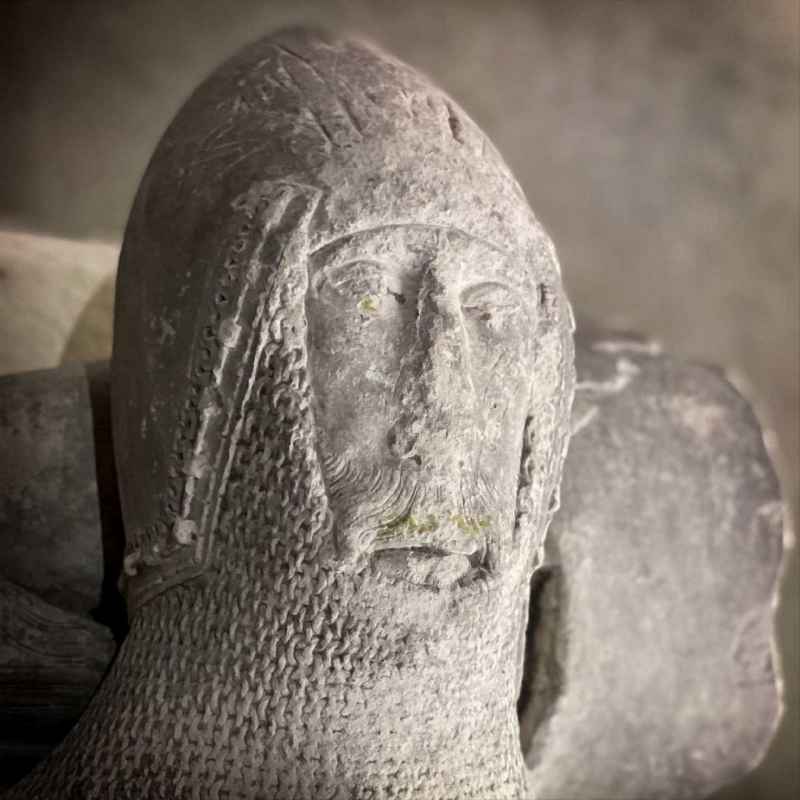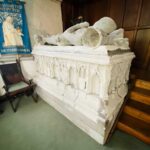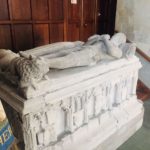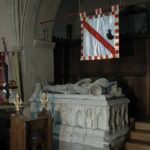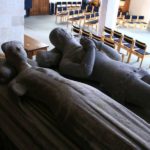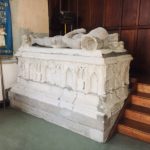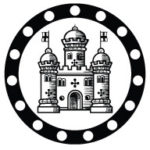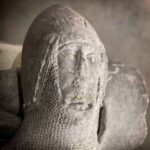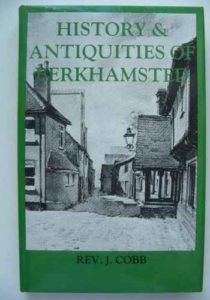In the mid-14th century, Henry of Berkhamsted (or Henry de Berkhampstede) was a significant figure in the retinue of Edward the Black Prince at Berkhamsted Castle.
His name suggests he was a local with strong ties to the town. He was initially employed as a butler at the Castle by a baron and one of the advisers to the Black Prince, Bartholomew Burghersh the elder.
Henry soon made his mark as a loyal companion of Edward the Black Prince, Prince of Wales and son of King Edward III. Europe was in the throes of the Hundred Years’ War and the prince’s Berkhamsted base became an important military centre. Henry served as one of the Black Prince’s henchmen for many years and participated in his military campaigns in France.
In August 1346, Henry fought alongside the Black Prince at the Battle of Crécy. In his 1855 history lectures, historian John Wolstenholme Cobb recounted:
“It was from Berkhamsted that he chose many of his officers; Henry of Berkhampstede was his marshal, and six picked men went over with him from our town to fight the French at Crécy.”
Under Burghersh, Henry’s position at the royal court was firmly established. In 1351, in recognition of “the “great diligence and labour which Sir Bartholomew has long expended on the good government of the Prince’s person and lordships”, Henry was promoted to the position of Porter of the Castle.
In September 1356, Henry fought alongside Prince Edward at the Battle of Poitiers. After returning victorious to England, Henry’s service was rewarded when he was appointed as Constable of Berkhamsted Castle. The prince also granted him a free land lease and compensation of £6 for the loss of his horse in battle.
In 1362, when the King granted the title of Prince of Aquitaine to his son, Henry accompanied the Black Prince to France, but travelled back to Berkhamsted frequently to oversee the prince’s interests at the Castle. In 1366, he was held the title of Marshall of the Prince of Wales.
Henry remained in his post as Constable of Berkhamsted Castle until 1381. It is thought he died in 1398.
Henry’s (supposed) Tomb
Henry’s significance outside the royal court and in the town is possibly marked by the presence of a medieval chest tomb within the town’s Parish Church of St Peter. This sizeable tomb of local Totternhoe stone is ornately carved and is topped with a pair of recumbent effigies depicting a knight and his wife. The identity of the deceased is not entirely certain; the tomb has no inscription, but among the Decorated Gothic ornamentation around the base can be found the crests of both the Incent and Torrington families, suggesting a marriage between the two families. Also present is the crest of the Burghersh family by the lady’s head, possibly indicating that she was related to Henry’s first employer, Bartholomew Burghersh.
These crests offer clues, but have caused controversy for historians. For centuries, this was believed to be the tomb of Richard and Margaret Torrington, a wealthy Berkhamsted family who probably funded structural additions to St Peter’s Church in the early 14th century. The 17th-century antiquarians Henry Chauncy and John Weever were both convinced of the tomb’s Torrington provenance; the Victorian historian John Wolstenholme Cobb surmised that it might be a son of the Torrigintons; and, writing in 1923, historian Richard Norris referred to this tomb as “the Torrington or Incent Tomb”. Fifty years later, the accepted wisdom had changed, and historian Percy Birtchnell stated that this was the tomb of Henry of Berkhamsted.
This understanding continues today, and while it is by no means certain, it seems likely that this is Henry, Constable of Berkhamsted Castle. The effigy in full armour is a clear tribute to someone who had fought in battle. His hands are clasped in prayer, and at his feet is a lion, possibly representing royal power, but also in medieval symbolism an allegory of resurrection. His chainmail-clad head rests on a helmet which is topped with a crest bearing a bearded male face. The form of the chest tomb (or altar tomb) is typical of its period, and it may be compared with the more grandiose tomb of Henry’s master, Edward the Black Prince himself, which can be seen in Canterbury Cathedral.
Henry’s tomb is not in its original position; it once stood in the nave of the church, underneath the arches of the north aisle, but it has been moved during a re-ordering, possibly more than once. Of particular interest is Weever’s observation in his 1599 publication Ancient Funerall Monuments, in which he describes the chest tomb in St Peter’s as “strangely painted” – a reminder that medieval monuments were originally painted in bright colours. Today, just a fragment of that paintwork can be seen, where a few flakes of red paint have survived inside the helmet under Henry’s head. For many years, the funeral helmet of Adolphus Carey (brother of Sir Edward Carey) was hung on display above Henry’s tomb, but it was stolen in the 1980s.
As with so many monuments of this age, nothing is certain, but the evidence — that this is a memorial to a person of high family standing in both town and royal court, buried with military honours in the late 14th century — supports the conclusion that this is probably Henry of Berkhamsted.
Further reading
As an Amazon Associate, we earn from qualifying purchases.
